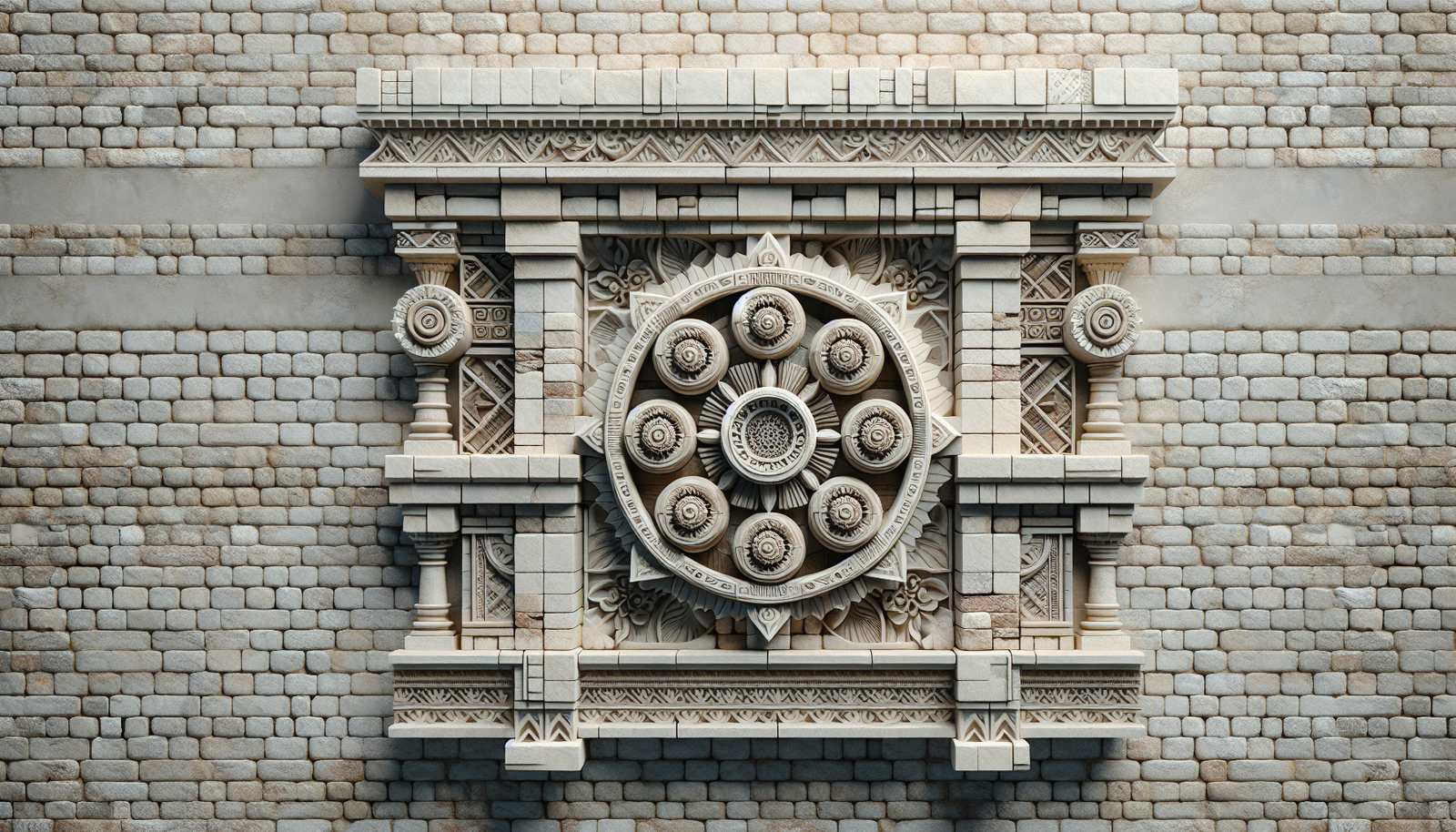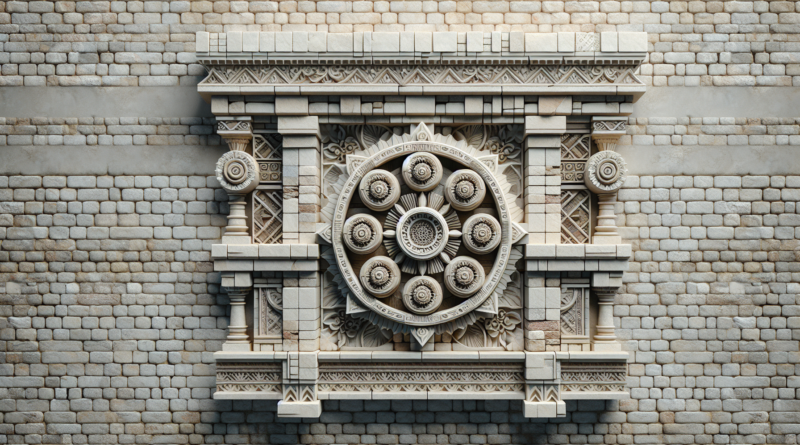Preserving Historic Masonry Techniques
Imagine stepping back in time and witnessing the masterful art of historic masonry techniques. From the towering cathedrals of medieval Europe to the ancient structures of the Mayans, these techniques have been used for centuries to create lasting architectural wonders. This article will take you on a journey through time, exploring the intricacies of preserving and restoring these remarkable techniques. Discover the secrets of crafting with stone and mortar, and gain a new appreciation for the dedication and skill of the craftsmen who came before us. So grab your trowel and join us as we delve into the world of historic masonry techniques.
Preserving Historic Masonry Techniques
Introduction
Preserving historic masonry techniques is essential in order to protect and maintain our cultural heritage. Masonry has been an integral part of building construction for centuries, and the techniques used in the past hold a wealth of knowledge and craftsmanship. By understanding and preserving these techniques, we can ensure that our historic structures continue to stand the test of time.
Importance of Preserving Historic Masonry Techniques
Preserving historic masonry techniques is crucial for several reasons.
Preservation of Cultural Heritage
Historic masonry structures are not only architectural marvels but also invaluable pieces of our cultural heritage. They serve as a reminder of our past, telling stories of the people, craftsmanship, and traditions of bygone eras. By preserving these techniques, we can maintain a connection to our history and ensure that future generations can appreciate and learn from them.
Continuation of Traditional Craftsmanship
Historic masonry techniques are a testament to the skill and expertise of craftsmen from centuries ago. By preserving these techniques, we can pass on this knowledge to future masons and ensure the continuation of traditional craftsmanship. This allows us to maintain the authenticity and integrity of historic structures, contributing to the overall preservation of our built environment.
Sustainable Building Practices
Historic masonry techniques often prioritize the use of natural and durable materials, such as stone and brick, which have minimal impact on the environment. By understanding and utilizing these techniques, we can incorporate sustainable building practices into modern construction. This promotes the use of locally sourced materials and reduces energy consumption, leading to more environmentally friendly buildings.
Maintaining Architectural Integrity
Historic masonry techniques were developed to create buildings that could withstand the test of time. By preserving these techniques, we can ensure the structural integrity of historic structures. This includes understanding the appropriate use of materials, tools, and techniques, as well as implementing proper maintenance and repair methods. By doing so, we can extend the lifespan of these structures and prevent irreversible damage.
Understanding Historic Masonry Techniques
To effectively preserve historic masonry techniques, it is important to have a solid understanding of their origins, evolution, and characteristics.
Origins and Evolution of Masonry Techniques
Masonry techniques have been used for thousands of years and have evolved alongside advancements in construction technology and materials. From the early use of simple stone tools to the introduction of machinery and modern tools, masonry techniques have adapted and improved over time. By studying the historical development of these techniques, we can gain insights into the cultural, technological, and artistic influences that shaped them.
Types of Masonry Structures
Historic masonry techniques have been employed in the construction of various types of structures, including castles, cathedrals, fortifications, houses, and monuments. Each type of structure requires different techniques and considerations in order to ensure stability and longevity. By understanding the nuances of each type of masonry structure, preservation efforts can be tailored to meet their specific needs.
Characteristics of Historic Masonry
Historic masonry structures often exhibit unique characteristics that distinguish them from modern constructions. These include the use of specific materials, intricate detailing, and craftsmanship that reflect the time period in which they were built. By recognizing and appreciating these characteristics, we can approach preservation efforts with a greater understanding and respect for the original design and intention of the structure.
Materials Used in Historic Masonry Techniques
Historic masonry techniques make use of various materials to achieve their desired results. Understanding these materials is essential for effective preservation and restoration.
Stone
Stone is one of the most commonly used materials in historic masonry techniques. It is durable, resistant to weathering, and offers a range of natural colors and textures. Different types of stone, such as limestone, sandstone, and granite, were used depending on the location and availability. Preserving and repairing stone masonry involves careful selection of matching stones, as well as techniques for cleaning, repointing, and consolidating the existing masonry.
Brick
Brick masonry techniques have been employed extensively throughout history. Bricks are made from clay or shale and offer good thermal insulation properties. Historic brick structures require specialized techniques for cleaning, repointing, and replacing damaged bricks. It is important to match the size, color, and texture of replacement bricks to maintain the visual integrity of the structure.
Lime Mortar
Lime mortar, made from lime, sand, and water, was commonly used in historic masonry construction. It offers good bonding properties and allows for slight movement in the masonry without causing damage. Preservation efforts involving lime mortar include repointing, stabilizing, and protecting the existing mortar joints. Traditional lime mortar techniques require a thorough understanding of the appropriate mix ratios and application methods.
Plaster
Plaster was used to finish interior and exterior surfaces of historic masonry structures. It provided a smooth and decorative surface while also offering some protection against moisture. Preserving historic plaster involves careful repair and replication of decorative elements, as well as appropriate surface preparation and finishing techniques.

Tools Used in Historic Masonry Techniques
The tools used in historic masonry techniques were crafted to meet specific needs and remain essential in preservation efforts.
Trowels
Trowels are one of the most basic and indispensable tools in masonry. They are used for applying and shaping mortar, as well as for spreading plaster. The size and shape of the trowel can vary depending on the specific task and personal preference.
Chisels
Chisels are used for cutting, shaping, and removing excess material from stone or brick. They come in various sizes and types, each serving a different purpose. Chisels with different edges, such as flat, pointed, or toothed, are used to achieve specific textures and finishes.
Hammers
Hammers are used for breaking and shaping stone or brick. They come in different sizes and weights, with each type designed for specific tasks. The mason’s hammer, with its flat face and chisel-like edges, is commonly used in historic masonry techniques.
Levels
Levels are essential tools for ensuring that the masonry is plumb and level. They are used to measure and maintain the correct vertical and horizontal alignment of the structure. Traditional bubble levels and plumb bobs were commonly used in historic masonry.
Masonry Brushes
Masonry brushes are used for applying and cleaning various materials, such as mortar or paint. They come in different sizes and bristle types, with each type suitable for different surfaces and applications.
Masonry Saws
Masonry saws are used for cutting stone or brick to size or shape. They can be powered by electricity or operated manually. Historic masonry saws were often large, heavy tools that required great skill and strength to handle.
Techniques of Stone Masonry
Stone masonry techniques encompass a range of methods for creating structures using stone as the primary building material.
Rubble Masonry
Rubble masonry involves using irregularly shaped stones of varying sizes to create a structure. It is commonly used for foundations and lower parts of walls. The stones are laid with mortar, and the gaps between them can be filled with smaller stones or mortar.
Ashlar Masonry
Ashlar masonry involves using precisely cut and dressed stones of uniform size and shape to create a finely finished structure. The stones are laid in horizontal courses with mortar joints. This technique is often used in the construction of prominent architectural features such as columns, arches, and facades.
Dry Stone Walling
Dry stone walling is a technique that does not use mortar to hold the stones together. Instead, stones are carefully selected and stacked in a way that relies on their shape and weight for stability. This technique is commonly used for retaining walls, boundary walls, and agricultural structures.
Carved Stone Details
Carved stone details involve the skilled shaping and decoration of stone elements within a masonry structure. This can include ornamental carvings, statues, reliefs, and decorative trims. The techniques used in carving stone require great precision and artistic skill.
Techniques of Brick Masonry
Brick masonry techniques have been employed in a variety of patterns and styles throughout history.
English Bond
English bond is a brick masonry technique that alternates courses of stretchers (bricks laid with their long sides facing forward) and headers (bricks laid with their short ends facing forward) in each course. This creates a strong and visually pleasing pattern.
Flemish Bond
Flemish bond is a brick masonry technique that uses alternating headers and stretchers in each course. However, unlike English bond, the headers are centered over the stretchers in each course, creating a more intricate and visually appealing pattern.
Header Bond
Header bond is a brick masonry technique that uses only headers in each course. This technique is often used for decorative purposes, such as creating arched openings or banding details.
Stretcher Bond
Stretcher bond is a brick masonry technique that uses only stretchers in each course. It is a simple and straightforward pattern often used for non-load-bearing walls or as infill between structural elements.
Techniques of Lime Mortar
Lime mortar is a key component of historic masonry construction and requires specific techniques for its preparation and application.
Preparing Lime Mortar Mix
Preparing a lime mortar mix involves combining lime, sand, and water in appropriate ratios. The lime should be slaked, or hydrated, before mixing to achieve the desired consistency and bonding properties. The mix should be thoroughly blended and allowed to mature before use.
Laying Lime Mortar Joints
Laying lime mortar joints requires skill and precision to achieve proper adhesion and uniform thickness. The mortar should be applied in thin, even layers, and a jointer can be used to create different finishes, such as flush or recessed joints.
Special Lime Mortar Techniques
Special lime mortar techniques include methods for repointing, repairing, and conserving existing lime mortar joints. These techniques ensure that the historic fabric of the masonry is preserved, while also allowing for necessary maintenance and repairs.
Techniques of Plastering
Plastering is used to finish and protect interior and exterior surfaces of historic masonry structures.
Applying Base Coats
Applying base coats involves preparing the surface, mixing the plaster, and applying it in multiple layers to achieve the desired thickness and texture. Each coat should be allowed to cure before adding subsequent layers.
Creating Decorative Finishes
Plaster can be manipulated to create a variety of decorative finishes, such as smooth, textured, or patterned surfaces. Skilled plasterers can use specialized techniques, such as scagliola or sgraffito, to achieve intricate and ornamental designs.
Repair and Replication
Preserving historic plaster often requires repair and replication of damaged or deteriorated areas. By using compatible materials and techniques, the original design and finishes can be faithfully restored, ensuring the longevity of the plasterwork.
Challenges in Preserving Historic Masonry Techniques
Preserving historic masonry techniques comes with its own set of challenges that require careful consideration and expertise.
One challenge is the availability of skilled craftsmen who are knowledgeable in the traditional techniques. With the decline in apprenticeships and the adoption of modern construction methods, finding individuals trained in historic masonry techniques can be difficult. It is crucial to invest in training programs and apprenticeships to ensure the continuation of these skills.
Another challenge is the availability of high-quality and locally sourced materials. Many traditional materials used in historic masonry, such as specific types of stone or clay, may no longer be easily accessible. It is important to work with local suppliers and ensure that the materials used in preservation efforts are as close to the originals as possible.
Preservation efforts must also take into account the need for ongoing maintenance and repair. Historic masonry structures are subject to a range of environmental factors, such as weathering, moisture, and seismic activity. Regular inspections, monitoring, and proactive maintenance are essential to prevent further deterioration and ensure the long-term stability of these structures.
Preservation and Conservation Methods for Historic Masonry
Preservation and conservation methods for historic masonry involve a combination of preventative maintenance, repair, and restoration techniques.
Preventative maintenance includes regular inspections, cleaning, and monitoring of the masonry to identify any potential issues or areas of concern. This allows for timely intervention and prevents further damage.
Repair techniques include repointing mortar joints, replacing damaged or deteriorated bricks or stones, and stabilizing cracking or weakened areas. It is crucial to use materials and techniques that are compatible with the original construction. This ensures that the repairs blend seamlessly with the existing masonry and do not cause further damage.
Restoration techniques involve more extensive interventions to bring the masonry back to its original condition. This may include recreating decorative details, replicating missing elements, or consolidating deteriorated areas. These techniques require a deep understanding of the original design and craftsmanship.
The selection of appropriate preservation and conservation methods should be guided by the principles of minimal intervention and reversibility. It is essential to strike a balance between preserving the historic fabric and ensuring the long-term stability of the structure.
Conclusion
Preserving historic masonry techniques is essential in order to protect our cultural heritage, continue traditional craftsmanship, promote sustainable building practices, and maintain architectural integrity. By understanding and utilizing these techniques, we can ensure that our historic structures continue to stand the test of time. However, this requires a combination of knowledge, skills, and ongoing maintenance efforts. By investing in training programs, supporting local suppliers, and implementing appropriate preservation and conservation methods, we can contribute to the long-term preservation and appreciation of our historic masonry structures.



